Introduction: In this article – to celebrate October being National Cookbook Month – Gena Philibert-Ortega writes about Junior League cookbooks, and shares some examples from her collection of more than 300 cookbooks! Gena is a genealogist and author of the book “From the Family Kitchen.”
There’s little doubt I love cookbooks. I have a whole room for my collection, which ranges from recipe booklets created by kitchen appliance manufacturers, to “famous” cookbooks like the Joy of Cooking, to community cookbooks. Cookbooks are one way to learn more about our ancestors’ lives.
One of the more popular types of community cookbooks are those published by the Junior League. Since the time of the American Civil War, community cookbooks have been published by groups to raise funds for projects. Junior League groups have been publishing community cookbooks since about 1930 to raise funds for their various volunteer projects.
The Junior League
The Junior League was founded in New York in 1901 by Mary Harriman, who was the daughter of financier and railroad executive E. H. Harriman. Mary wanted to “revolutionize the experience of young women being introduced to society.” With the debutante system already in place, Mary recognized that it provided a self-perpetuating supply of volunteers who, “with organized and combined effort,” could “put to good use the opportunities afforded them by the advantages of time and means.”
The young women who joined Mary and her organization, originally called The Junior League for the Promotion of Settlement Movements, were tasked with helping those in New York’s poorest neighborhoods. (1)
Today The Association of Junior Leagues International, Inc. boasts on their website:
“The Junior League has evolved into one of the oldest, largest, and most effective women’s volunteer organizations in the world, encompassing more than 125,000 women in over 295 Leagues in four countries.” (2)
Junior League Cookbooks
The first Junior League Cookbook is believed to be the 1930 privately printed The Junior League Recipe Book from Los Angeles, California. (3) Dedicated to “The Children of the Convalescent Home,” the book includes “500 favorite recipes of members of the Junior League and their friends.”
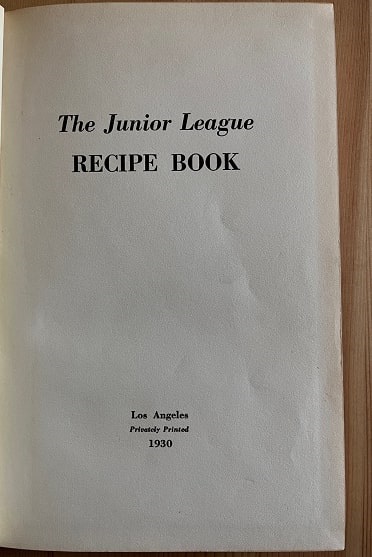
Today, there are over 200 Junior League cookbooks in print. (4) Shortly after that Los Angeles cookbook was published in 1930, other Junior League groups started working on their own. Historical newspapers, such as GenealogyBank’s Historical Newspaper Archives, provide information about these local groups’ efforts to collect and compile recipes, then print and sell cookbooks.
In 1933 the Omaha Junior League announced that their two-year project of compiling a cookbook was complete and that the finished product would soon be available to purchase. “The book contains tested recipes which were favorites among Junior Leaguers, their mothers and grandmothers” according to the following newspaper article. The group’s cookbook committee met weekly to test possible recipes for inclusion.
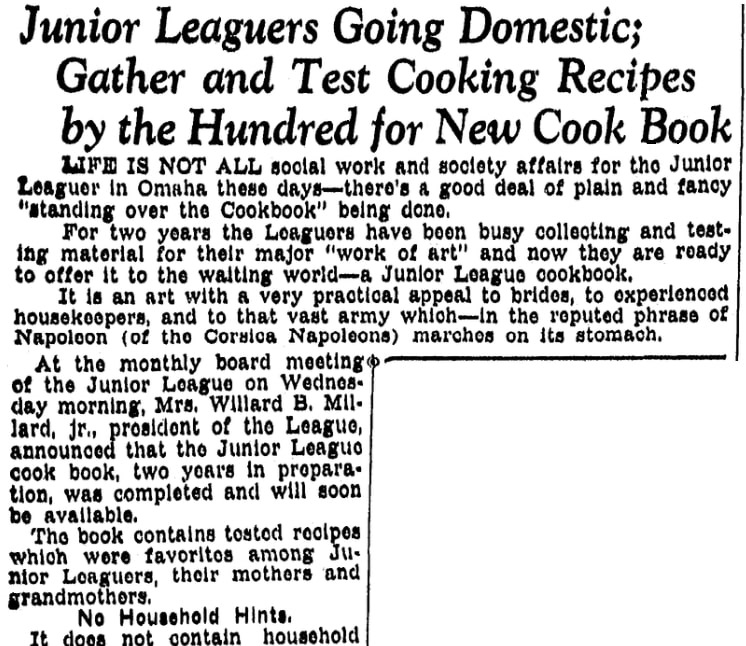
Today’s Junior League of Omaha still publishes a cookbook that supports the groups’ community and training initiatives. (5)
Junior League cookbooks, like other community cookbooks, include names of women who contributed recipes. They are one source for finding the name of female ancestors. A researcher would need to seek out the cookbooks printed in the place and time where their family member lived, in places like libraries and archives, to see if they are mentioned.
In this 1935 newspaper article about the Knoxville Tennessee Junior League Cookbook, a few recipes – and the names of the contributors – are printed, starting with Swedish Soup. The article stated that members and their mothers contributed recipes.

The article included this photo of two of the women working on the cookbook.
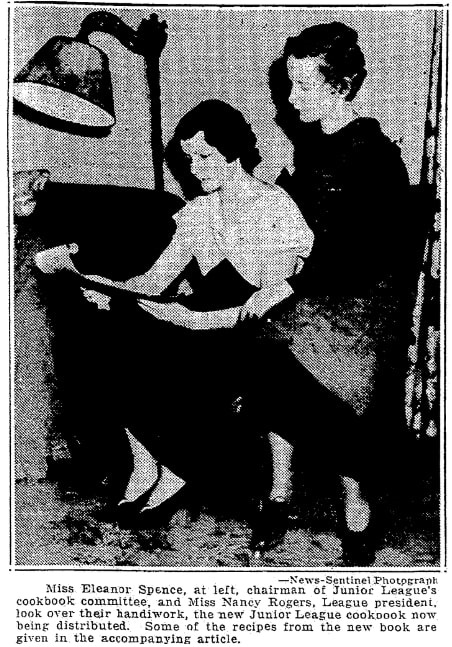
Here is another photo of a woman on a cookbook committee. This is Mrs. J. D. Bigger from the Dallas Junior League, whose kitchen was used for their recipe testing. Helpfully for family historians, this photo caption also includes her address and lists other women involved in the project.
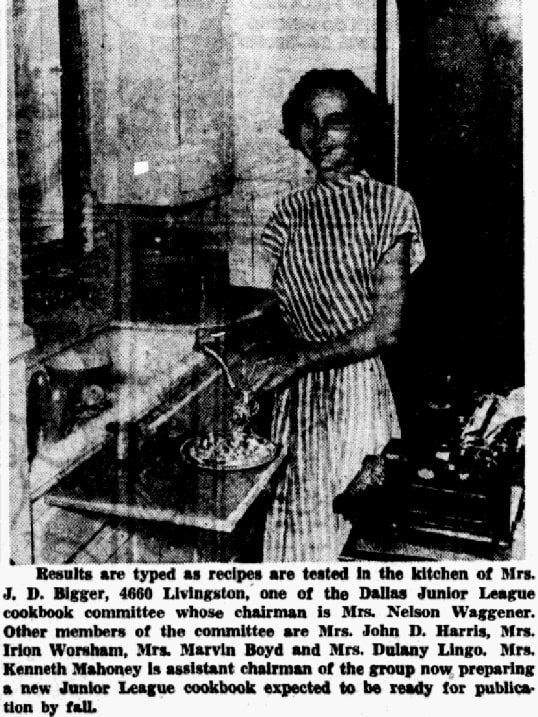
Genealogy Tip: Even if your ancestor was not a member of a specific group that published a cookbook, it can still be worthwhile to seek out these community cookbooks because they sometimes include the names and recipes of people outside of the group, as well as advertisements for local businesses.
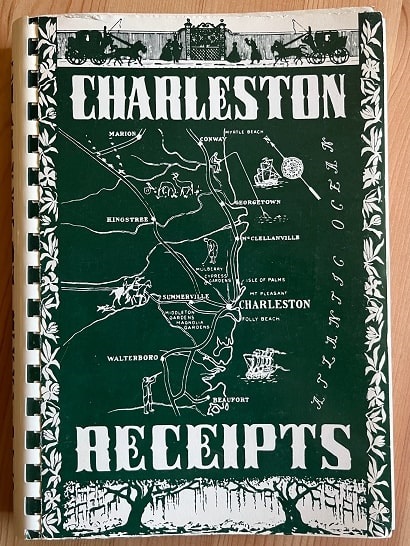
Some Junior League cookbooks have been printed numerous times, year after year, because of their popularity. One of the most popular, if not the most popular, Junior League cookbook is Charleston Receipts by the Junior League of Charleston. Their 1950 cookbook continues to be reprinted and is in its 35th printing! (6) The initial November 1950 printing of 2,000 copies sold out in four days. Note that this article about Charleston Receipts includes yet another photo of a woman on a cookbook committee.
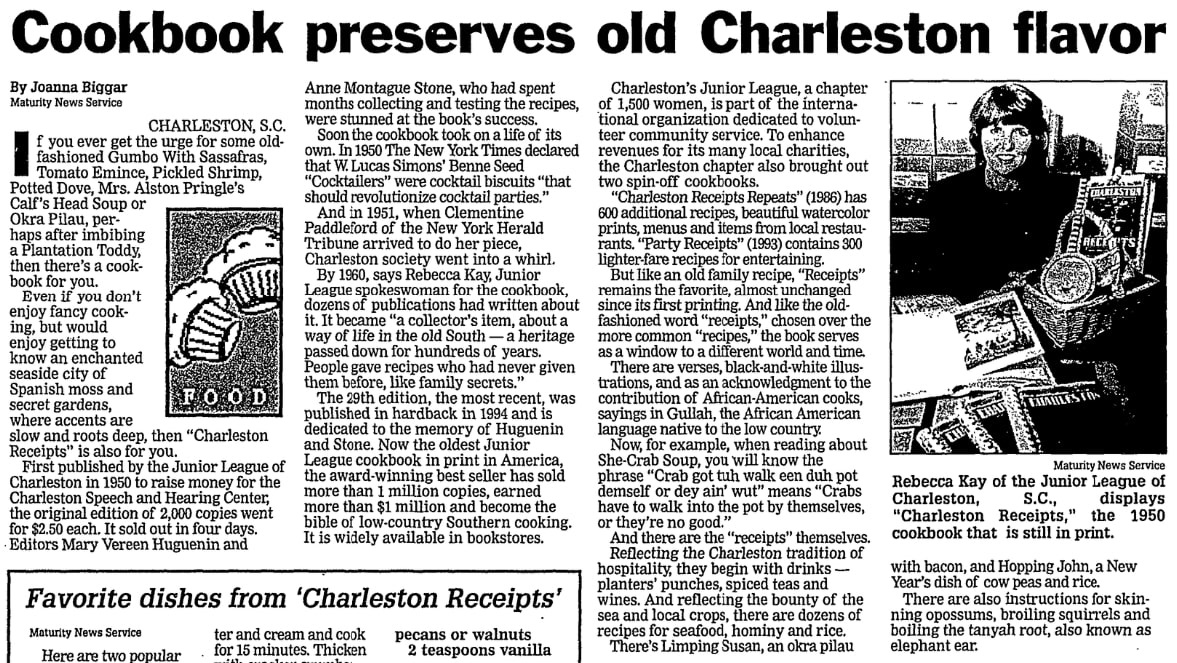
My copy of Charleston Receipts, from 1976, is the 21st printing of the cookbook. It contains 316 pages of recipes. Most wonderful for genealogists, the recipes give the women’s married and maiden names with each recipe!
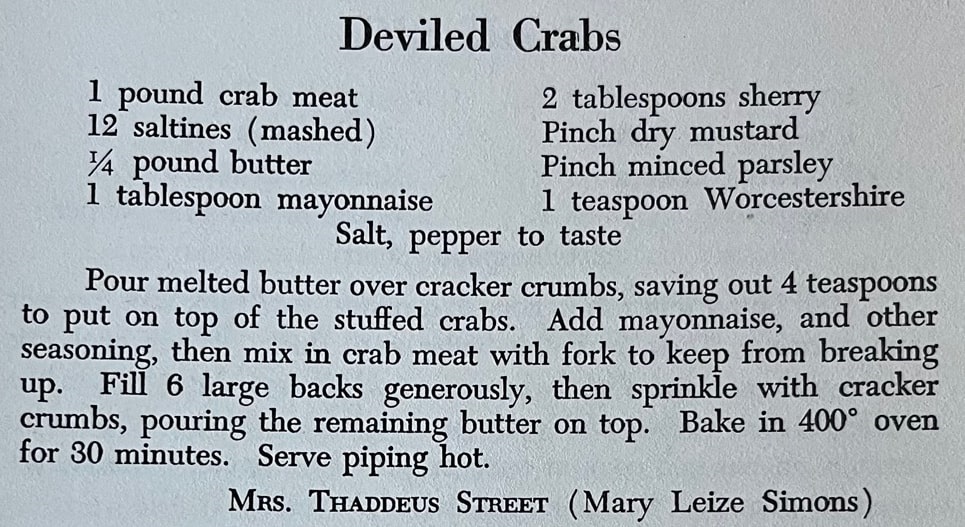
What’s Your Favorite Recipe?
Junior League cookbooks are a popular cookbook to collect, and continue to be published to raise funds for community projects. Even in today’s world of online recipe websites and cooking shows, you can still find Junior League groups publishing favorite recipes to fund their volunteer projects.
Explore over 330 years of newspapers and historical records in GenealogyBank. Discover your family story! Start a 7-Day Free Trial.
Note on the header image: various Junior League cookbooks in the author’s collection. Credit: Gena Philibert-Ortega.
__________________
(1) “Founder Mary Harriman,” The Association of Junior League International, Inc. (accessed 20 September 2022).
(2) The Association of Junior League International, Inc. (accessed 20 September 2022).
(3) Most websites claim this is the first Junior League cookbook; however, it does appear that there is at least one that predates this one by a year. Since the League has been around since 1901, it’s possible there could be earlier books that no longer exist.
(4) “Junior League Cookbooks: Crowdsourced Recipes, Old-School Style,” NPR (https://www.npr.org/sections/thesalt/2013/04/10/176833739/junior-league-cookbooks-crowdsourced-recipes-old-school-style: accessed 20 September 2022)
(5) “History of the Junior League Cookbook,” Junior League of Omaha (accessed 21 September 2022).
(6) “Charleston Receipts,” Charleston Specialty Foods (https://www.charlestonspecialtyfoods.com/products/charleston-receipts-cookbook: accessed 21 September 2022).
Related Article:
